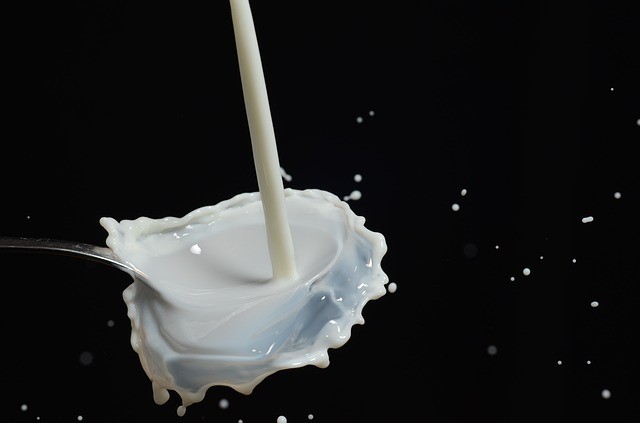Learn on which one we should drink! Check out the article we found over at Mercola.com.
By Dr. Mercola
Are you still eating low-fat or no-fat dairy products? If you are, you probably think you’re doing the right thing for your health. And if you check with virtually any public health agency, they’d wholeheartedly agree.
The American Heart Association, American Diabetes Association, and American Cancer Society, for instance, all recommend low-fat or no-fat dairy. The US Department of Agriculture, in their nutrition guidelines for Americans, also advises, “Dairy Group choices should be fat-free or low-fat.”
So what’s the problem? The advice to eat low-fat foods, including dairy, is antiquated, at least back to the 1970s, when low-fat diets were first recommended.
It’s also not scientifically supported, and if you’re choosing low-fat over full-fat, not only are you missing out on taste, flavor and satisfaction, but you’re missing out on valuable benefits to your health – benefits that come from eating full-fatfoods.
Skim Milk Was Once Considered ‘Hog Slop’
While you’ve probably become accustomed to seeing skim milk, 1 percent, 2 percent, and whole when purchasing milk, keep in mind that it wasn’t always this way. Prior to World War II, skim milk was not sold in stores, but rather thrown away or used as feed for chickens, hogs and calves.
During World War II, dried milk powder became a preferred relief food, with the government asking U.S. dairies to produce 200 million pounds of dry skim milk powder for America’s allies.
When the war ended, however, a new marketing strategy was necessary. As written in the book “Pure and Modern Milk: An Environmental History Since 1900” by Kendra Smith-Howard:
“The development of skim milk as an attractive product for sale only came about because dairy producers, emboldened by their success selling milk to Uncle Sam during World War II, seized on postwar marketing opportunities to sell what once had been hog slop to housewives and families.”
The Case for Full-Fat Dairy
A study published in the European Journal of Nutrition looked at the relationship between the consumption of dairy fat and high-fat dairy foods, obesity, and cardiometabolic disease.4
Those who ate full-fat dairy were no more likely to develop heart disease or type 2 diabetes than those who ate low-fat dairy. Further, those who ate full-fat dairy were less likely to be obese.
According to the researchers:
“The observational evidence does not support the hypothesis that dairy fat or high-fat dairy foods contribute to obesity or cardiometabolic risk, and suggests that high-fat dairy consumption within typical dietary patterns is inversely associated with obesity risk.”
A separate study similarly found that low intake of dairy fat (no butter and low-fat milk and seldom/never whipping cream) was associated with a higher risk of developing central obesity while a high intake of dairy fat (butter, high-fat milk and whipping cream) was associated with a lower risk of central obesity.
Still more research showed women who ate at least one serving of full-fat dairy a day gained 30 percent less weight over a nine-year period than women who ate only low-fat (or no) dairy products. In addition to weight benefits, previous studies have also shown that consuming full-fat dairy may help reduce your risk of:
- Cancer:Conjugated linoleic acid (CLA), a type of fat found naturally in cow’s milk, significantly lowers the risk of cancer. In one study, those who ate at least four servings of high-fat dairy foods each day had a 41 percent lower risk of bowel cancer than those who ate less than one. Each increment of two servings of dairy products reduced a woman’s colon cancer risk by 13 percent.
- Heart Disease: People who ate the most full-fat dairy were less likely to die from cardiovascular disease, according to a 16-year study of Australian adults.
- Type 2 Diabetes: People who ate eight portions of full-fat dairy products a day cut their risk of diabetes by nearly 25 percent compared to those who ate fewer portions.
How to Increase Your Intake of Healthy Fats
The take-home message here is that eating saturated fats such as butter, coconut oil, and raw whole milk will not increase your risk of chronic disease or make you fat. On the contrary, it is extremely important for optimal health, including your heart and cardiovascular health. What WILL dramatically raise your risk of heart disease and any number of other chronic health problems is refined carbohydrates, including sugar, fructose, and grains.
Replacing saturated fats with trans fats and non-vegetable carbohydrates is precisely what has led to rising rates of chronic disease and obesity over the past several decades. Fortunately, reversing this trend is rather simple, at least on an individual level: eat more health fat. Many would benefit from getting as much as 50-85 percent of their daily calories from fats. Although this sounds like a lot, by volume the largest portion of your plate would be vegetables because they have so few calories.
Next Article: Coconut Milk And Turmeric Drink – Powerhouse Detox & Anti-Inflammatory
Read full article: Is Whole Milk Dairy Better Than Low Fat?







Recent Comments